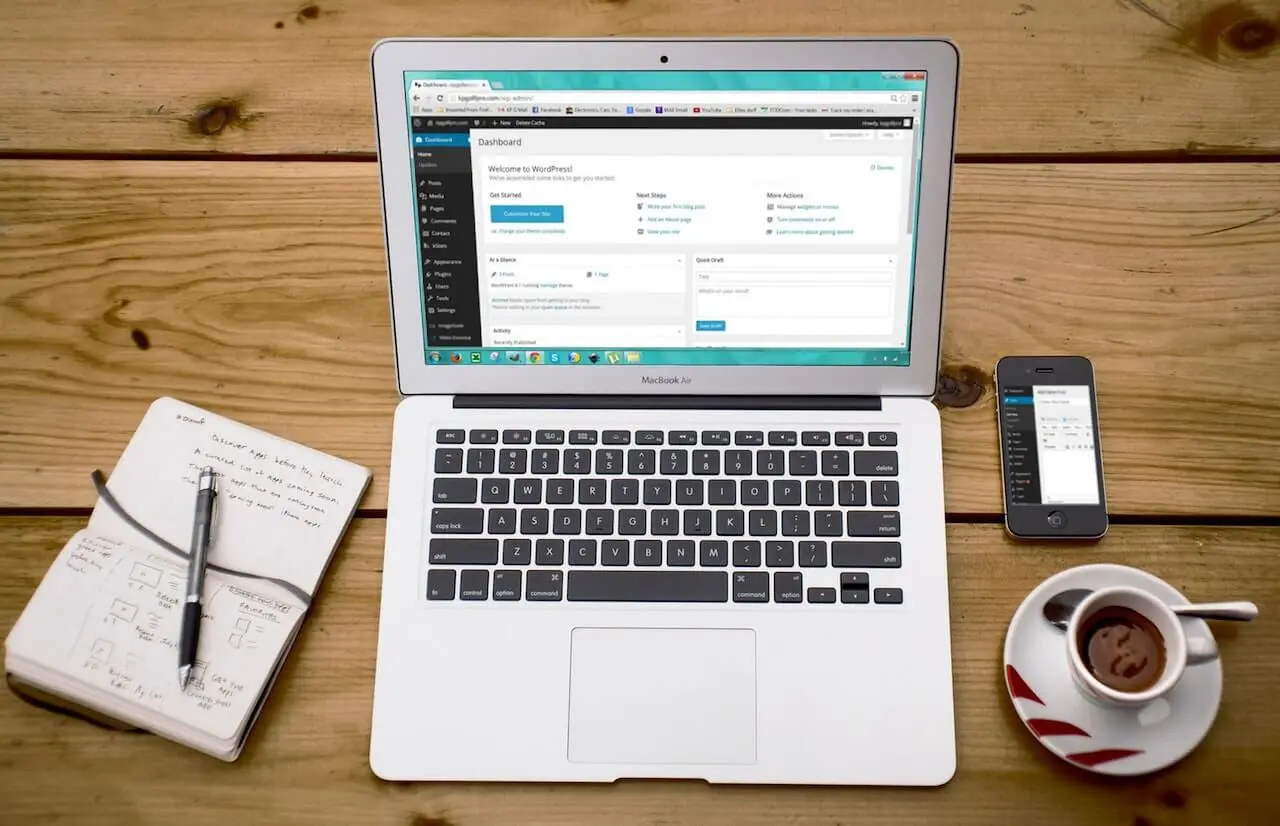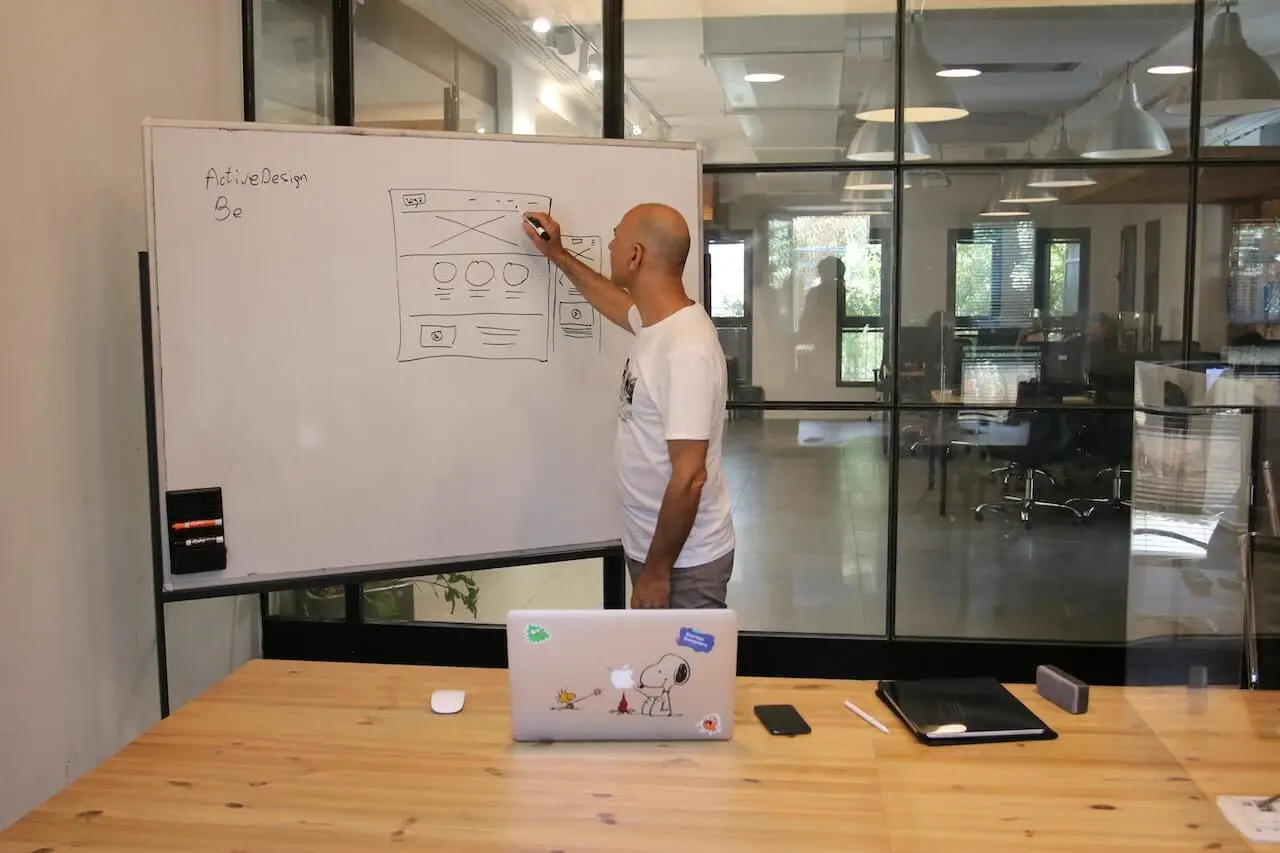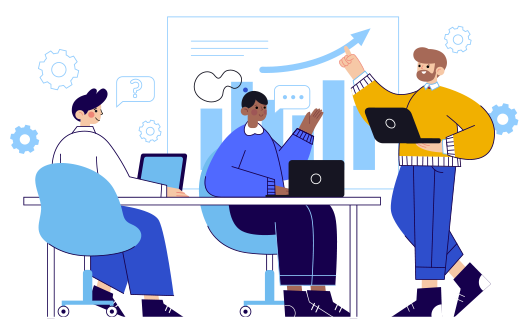Website UI/UX design
10+ Years Of Experience In Website Design & Development
As the digital landscape continues to evolve, the UI/UX design industry has become a crucial element in the success of any website or app. User interface (UI) design refers to the visual aspects of an application or website, while user experience (UX) design focuses on the overall experience a user has while interacting with the product.
At Coxtim, we understand the importance of great UI/UX design in creating a successful web app. Our team of designers and developers work together to create intuitive and visually appealing interfaces that enhance the user experience.
Understand the client's requirements
The first step is to understand the client's requirements, including their business goals, target audience, and any specific design requirements they may have.
Conduct research
Next, conduct research to gain a deeper understanding of the client's industry, competitors, and target audience. This will help you identify the design trends and best practices that are most effective in that industry.
Develop a design concept
Based on your research, develop a design concept that meets the client's requirements and aligns with their brand identity. This may involve creating wireframes, mockups, or prototypes.
Review and iterate
Once you have a design concept, share it with the client and gather their feedback. Use this feedback to refine the design and iterate until you have a final design that meets the client's requirements.
Implement the design
Once the design is finalized, work with developers to implement the design in the website. This may involve creating HTML/CSS templates or working with a content management system.
Test and refine
Finally, test the website to ensure that it meets the client's requirements and is user-friendly. Gather feedback from users and continue to refine the design to improve the user experience.

Why purchase our Ui Ux design service at coxtim?
- Experienced design team: Our team of designers has extensive experience in creating intuitive and visually appealing user interfaces that enhance the user experience. We have worked with clients across a variety of industries and have a deep understanding of the latest design trends and best practices.
- Focus on user experience: We understand that great design is not just about aesthetics, but also about functionality. That's why we prioritize user experience in all of our designs, ensuring that our products are intuitive, user-friendly, and accessible to all users.
- Customized designs: We work closely with our clients to understand their business goals, target audience, and design requirements. This allows us to create customized designs that meet their specific needs and align with their brand identity.
- Collaboration and transparency: We believe in a collaborative approach to design, working closely with our clients throughout the design process to gather feedback and ensure that the final design meets their requirements. We use Agile development methodologies to ensure that the development process is transparent and efficient.
- Stay up-to-date with the latest trends: The UI/UX design industry is constantly evolving, and at Coxtim, we stay up-to-date with the latest trends and technologies. We attend industry events, conduct research, and invest in the latest design tools to ensure that our designs are innovative and effective.
Design For Any Device Responsive Web Design
Responsive web design is an approach to web design that focuses on creating websites that provide an optimal user experience across a wide range of devices, including desktop computers, laptops, tablets, and smartphones. With responsive web design, the layout and content of the website adjusts dynamically based on the screen size and resolution of the device.
When designing for any device with responsive web design, there are several important considerations to keep in mind:
- Mobile-first design: It is important to design for mobile devices first, as they often have more limited screen space and require simplified navigation.
- Flexible grid systems: Using a flexible grid system can help ensure that the website layout adapts to different screen sizes and resolutions.
- Scalable images: Using images that can be scaled up or down based on the device screen size can help ensure that the website loads quickly and is visually appealing on all devices.
- Clear and simple navigation: The website navigation should be clear and simple, with easy-to-use menus and navigation links.
- Content prioritization: It is important to prioritize the most important content on the website, especially for mobile devices where screen space is limited.


Very Much 91.50% Increase in Organic Traffic
A 91.50% increase in organic traffic means that there has been a significant improvement in the amount of traffic coming to a website through search engine results, without paid advertising or other promotional efforts. This increase can be attributed to a number of factors, such as improved search engine optimization (SEO), content marketing, and social media engagement.
-
Keyword research: Identifying the most relevant and valuable keywords for the website’s target audience, and using them strategically in content and metadata. - On-page optimization: Ensuring that the website’s pages are properly structured and optimized for search engine crawlers, including title tags, meta descriptions, and header tags.
- Content creation: Developing high-quality, relevant, and engaging content that is optimized for search engine visibility and user engagement.
- Link building: Building high-quality inbound links from reputable sources to improve the website’s authority and visibility in search engine results.
- Social media engagement: Building a strong social media presence and engaging with users on social media platforms to improve brand awareness and drive traffic to the website.
Marketing to Support Your Web Design
Search Engine Optimization (SEO)
SEO involves optimizing your website's content and structure to rank higher in search engine results. This can help increase the visibility and credibility of your website among potential customers.
Content Marketing
Content marketing involves creating and sharing valuable, relevant, and consistent content to attract and retain a clearly defined audience. This can help build brand awareness and establish your company as a thought leader in your industry.
Pay-Per-Click (PPC) Advertising
PPC advertising involves placing ads on search engines and other websites, and paying only when a user clicks on the ad. This can help drive targeted traffic to your website and increase conversions.
Email Marketing
Email marketing involves sending targeted emails to your subscribers to promote your products or services, share relevant content, and drive traffic to your website.



Years Of Experience
Asked Questions about Ui Ux design
UI (User Interface) design is the design of the visual elements and layout of a website, while UX (User Experience) design is the process of designing the user journey and overall experience of using a website. UI/UX design combines both of these disciplines to create a website that is visually appealing, easy to use, and enhances the user experience.
UI/UX design is important for a website because it directly impacts the user experience. A well-designed website with a clear and intuitive interface can improve user engagement, increase conversions, and build brand loyalty. In contrast, a poorly designed website can frustrate users and drive them away.
UI (User Interface) design is focused on the visual design of a website, including layout, typography, color scheme, and other visual elements. UX (User Experience) design is focused on the user journey and overall experience of using a website, including usability, accessibility, and user flow.
Creating a good UI/UX design involves understanding the user's needs and goals, identifying pain points and opportunities for improvement, and designing a website that is intuitive, visually appealing, and easy to use. It also involves collaborating with developers and stakeholders to ensure that the design can be implemented effectively.
The effectiveness of a UI/UX design can be measured through user testing, analytics, and feedback from users. User testing involves observing users as they interact with the website and identifying areas for improvement. Analytics can provide data on user behavior, including page views, bounce rates, and conversion rates. Feedback from users can be gathered through surveys or user testing sessions.
Design web template in PSD, xd or figma website
Basic Plan
- Home Page design
- 1 page/screen
- Source file
- Online support (24/7)
- 4 Days Delivery
- 5 Revisions
Standard Plan
- Home Page
- 2 Inner Pages
- 3 pages/screens
- Online support (24/7)
- Prototype
- Source file
- 7 Days Delivery
- 7 Revisions
Premium Plan
- Home Page
- 4 Inner Page
- 5 pages/screens
- Online support (24/7)
- Responsive design
- Prototype
- Source file
- 14 Days Delivery
- 9 Revisions
Checkout Our UI/UX design Services
- Minimalist design: a simple and clean design with minimal elements and features.
- Flat design: a design style that uses simple two-dimensional elements and bright colors.
- Material design: a design style that uses shadows and depth to create a realistic and tactile user interface.
- Responsive design: a design that adjusts and optimizes the layout for different screen sizes and devices.
- Parallax design: a design that creates an illusion of depth by using scrolling and overlapping elements.
- One-page design: a design that fits all the content on a single page, with sections navigated via scrolling or links.
- Typography-focused design: a design that emphasizes typography, using creative fonts and typography hierarchy to draw attention.
- Illustration-focused design: a design that uses illustrations to convey a message or story.
- Image-focused design: a design that uses large, high-quality images to create an immersive experience.
- Interactive design: a design that encourages user engagement through animations, videos, and interactive elements.
- Storytelling design: a design that uses a narrative structure to tell a story or convey information.
- E-commerce design: a design that focuses on optimizing the user experience for buying products online.
- Blog design: a design that focuses on displaying blog posts and encouraging user engagement through comments and social sharing.
- Portfolio design: a design that showcases the work of an artist, designer, or photographer.
- Magazine design: a design that organizes content in a way that mimics a traditional print magazine, with sections and features.
- Landing page design: a design that is focused on encouraging a user to take a specific action, such as signing up for a newsletter or downloading an ebook.
- Video background design: a design that uses a video background to create an immersive and engaging experience.
- App-focused design: a design that promotes and encourages app downloads, with links to app stores and features specific to mobile devices.


